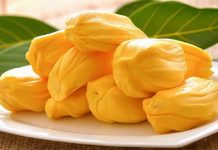Family: Moraceae
Synonym:Morus chinensis Lodd. ex Loudon
Bengali/Vernacular name: Tut.
Tribal name: Soh-miaoh (Khasia), Mokhum-yam-phak (Tripura).
English name: Mulberry, White mulberry.
Description of the plant: A small to medium-sized deciduous tree. Leaves simple, alternate, petiolate, 5-16 cm long, rounded to shallowly cordate at the base, acute apex, margin sharply serrate. Flowers unisexual, the female flowers numerous and crowded in short spikes. Fruit an ovoid syncarp, 1.5-3 cm long, pinkish to dark purple when ripe.
Plant parts used: Leaf, fruit, bark, root.
Herbal uses:Decoction prepared from the leaves of the plant is given for cold, cough, sore throats, and fevertreatment.
Paste prepared from the leaves of the plant is applied to the affected part of the body for the treatment of rheumatism, wounds, and insect bite.
Decoction made with theleavesof the plant is used for the treatment of sweating feet, dropsy, and intestinal disorders.
The bark is anthelmintic and purgative; it is used to expel tape worms.
The fruit has a tonic effect on kidney energy, it is used in the treatment of urinary incontinence, dizziness, tinnitus, insomnia due to anaemia, neurasthenia, hypertension, diabetes, premature greying of the hair, and constipation in the elderly.
Root bark of the plant is used internally in the treatment of asthma, bronchitis, and oedema.
Extract of the leaves can be used in the treatment of elephantiasis.
Leaves of the plant are used for the treatment of conjunctivitis.
Distribution: It is cultivated throughout the country, particularly in northern districts.
Is this plant misidentified? If yes, please tell us….














